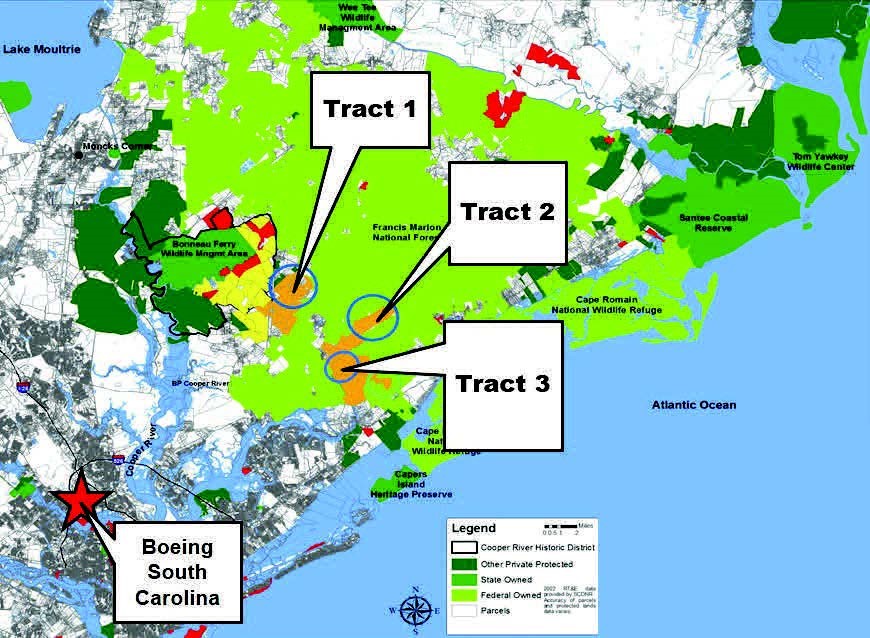Boeing’s commitment to environmental stewardship in South Carolina was recognized in March by the Wildlife Habitat Council (WHC) with a Conservation Certification for its 2014 wetlands mitigation project near the Francis Marion National Forest in Eastern South Carolina.
The initiative preserves approximately 4,000 acres of land, including more than 2,000 acres of wetlands, on three separate tracts and is a collaboration between Boeing, the U.S. Army Corps of Engineers, the S.C. Department of Health and Environmental Control, the Lowcountry Land Trust and the S.C. Department of Natural Resources.
The wetlands mitigation effort was part of the permitting process for 468 acres of land in North Charleston that Boeing previously announced it would lease from the State of South Carolina to protect for potential future growth. Included in that leased property is 153 acres of wetlands that date back to the property’s former use as a phosphate mine.
The protected tracts continues to be managed each year through selective timber thinning and replacement, prescribed burning, firebreak installation and invasive fauna elimination. The result is a thriving wetland that is home to several threatened and endangered species such as the Frosted Flatwoods Salamander, the Carolina Gopher Frog and the Red-cockaded Woodpecker. In addition, one of the objectives of the project is to restore the Long Leaf Pine ecosystem. The project has been used as a model for other landscape scale mitigation projects.
“The Boeing Keystone / Fairlawn Site is recognized as meeting the strict requirements of WHC Conservation Certification,” said Margaret O’Gorman, President, WHC. “Companies achieving WHC Conservation Certification, like Boeing are environmental leaders, voluntarily managing their lands to support sustainable ecosystems and the communities that surround them.”
